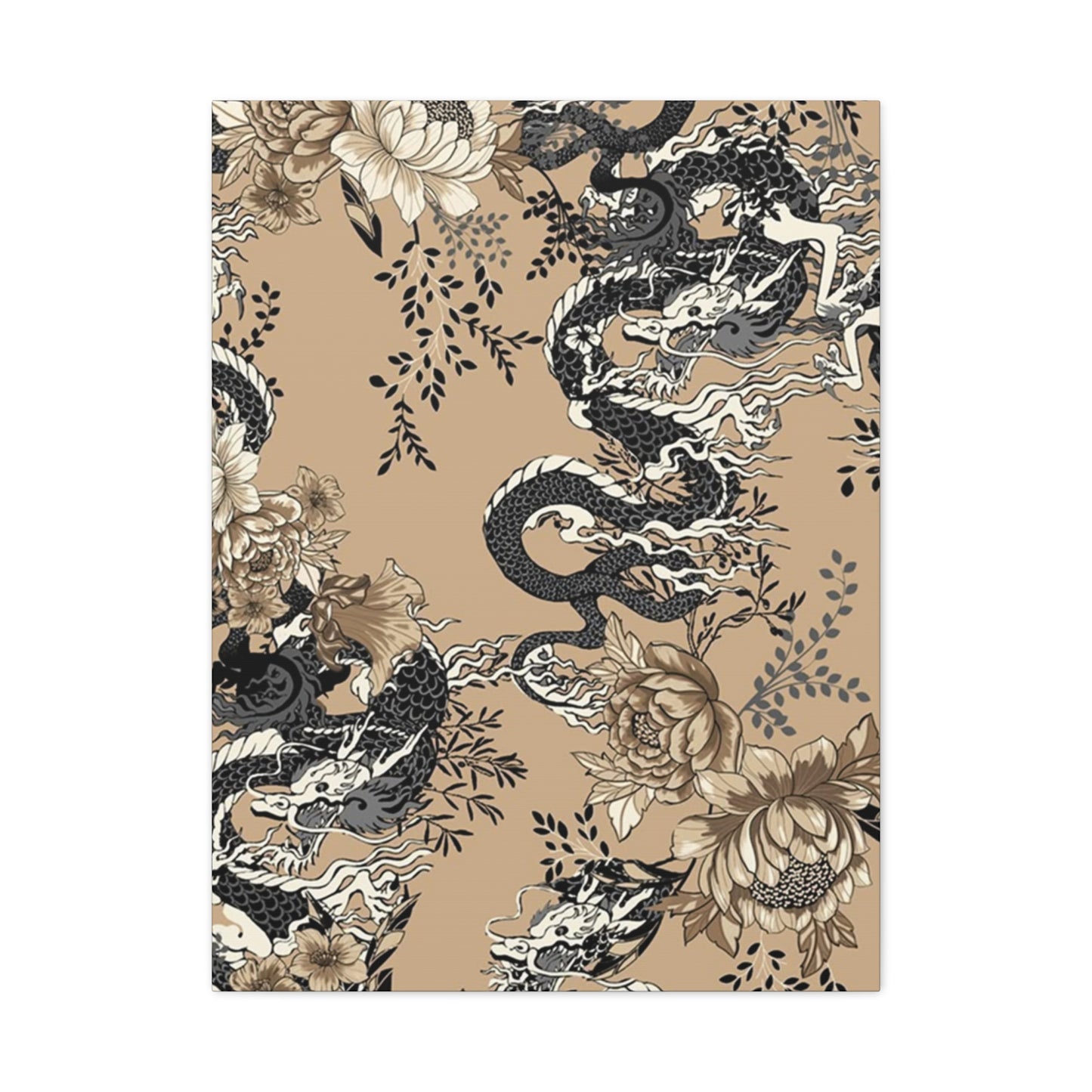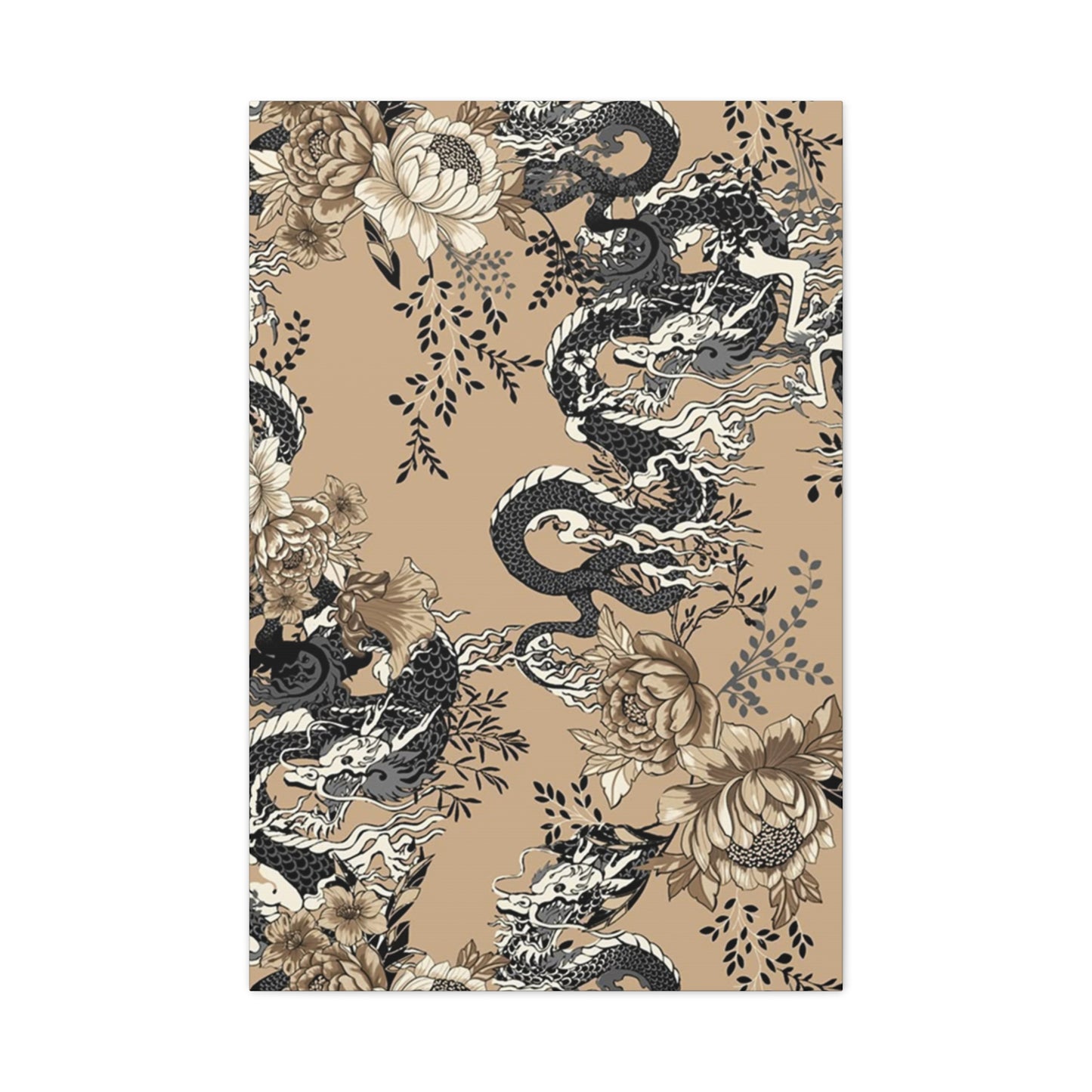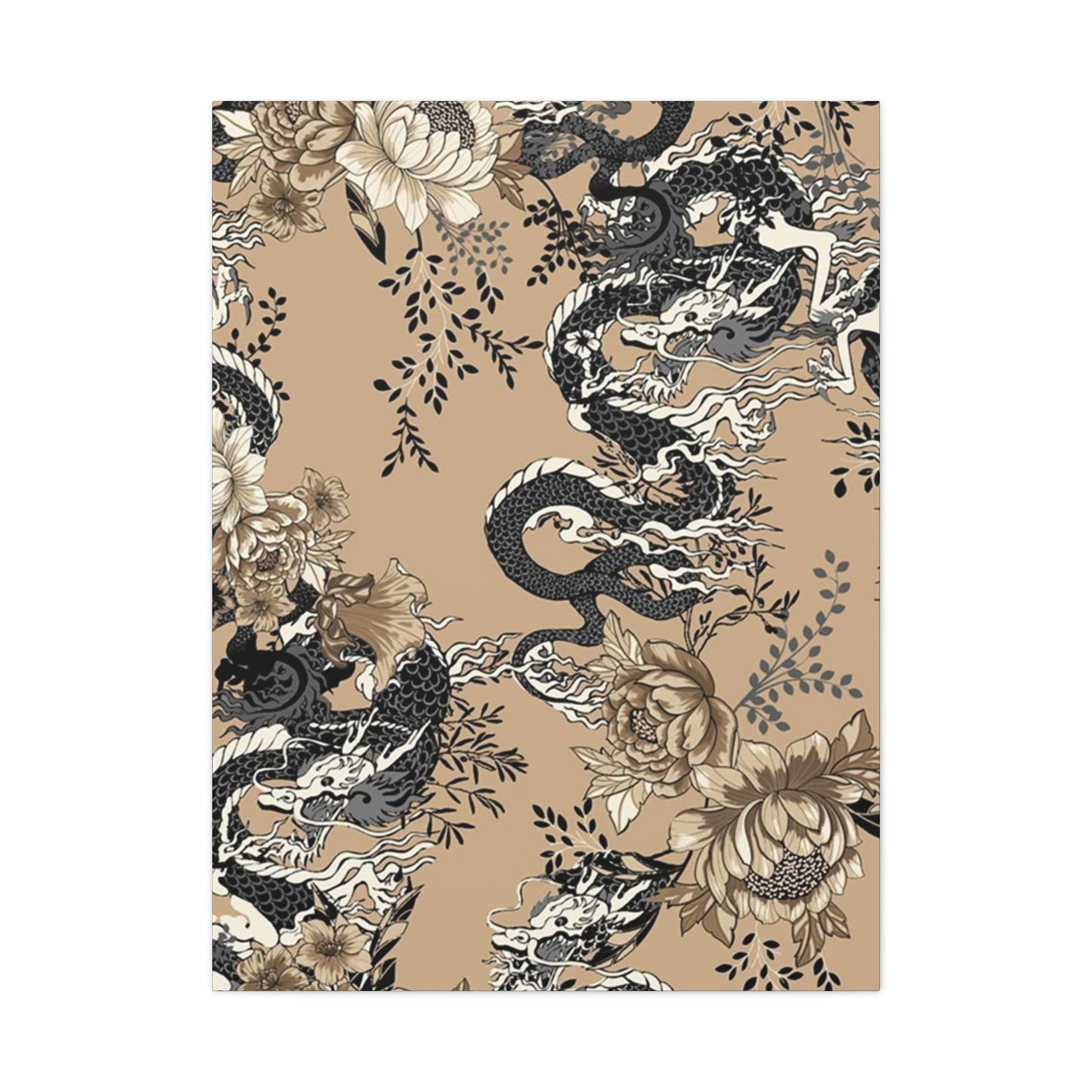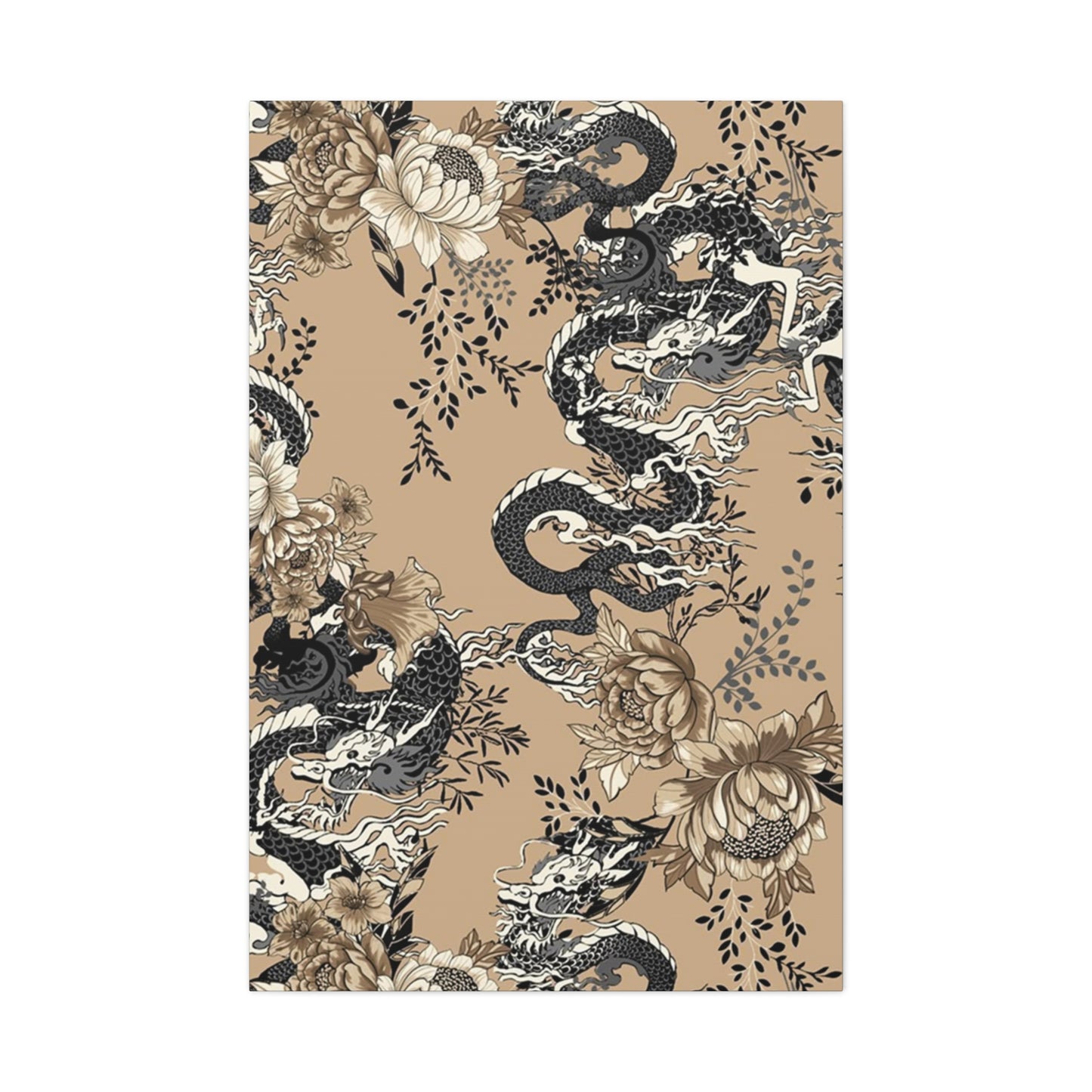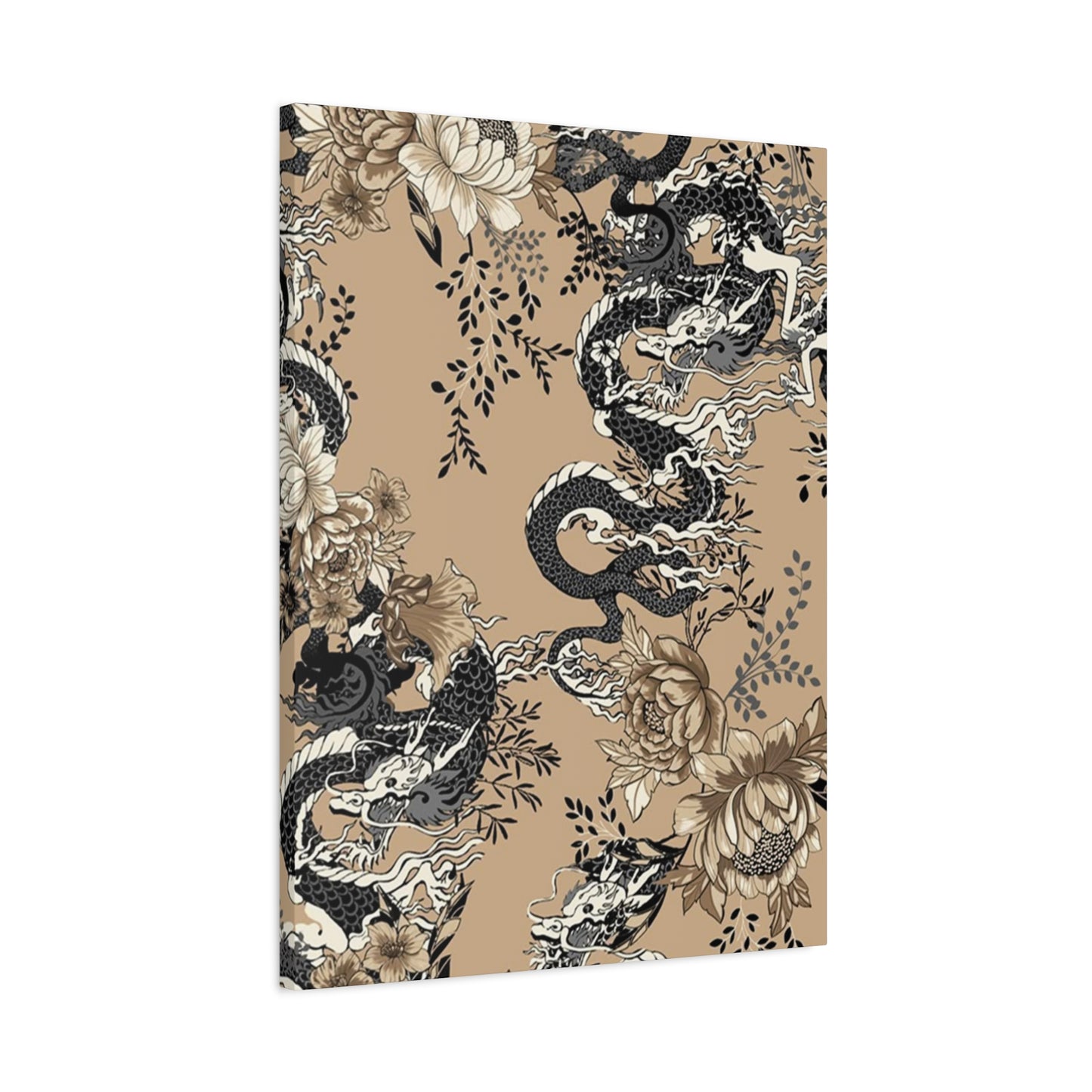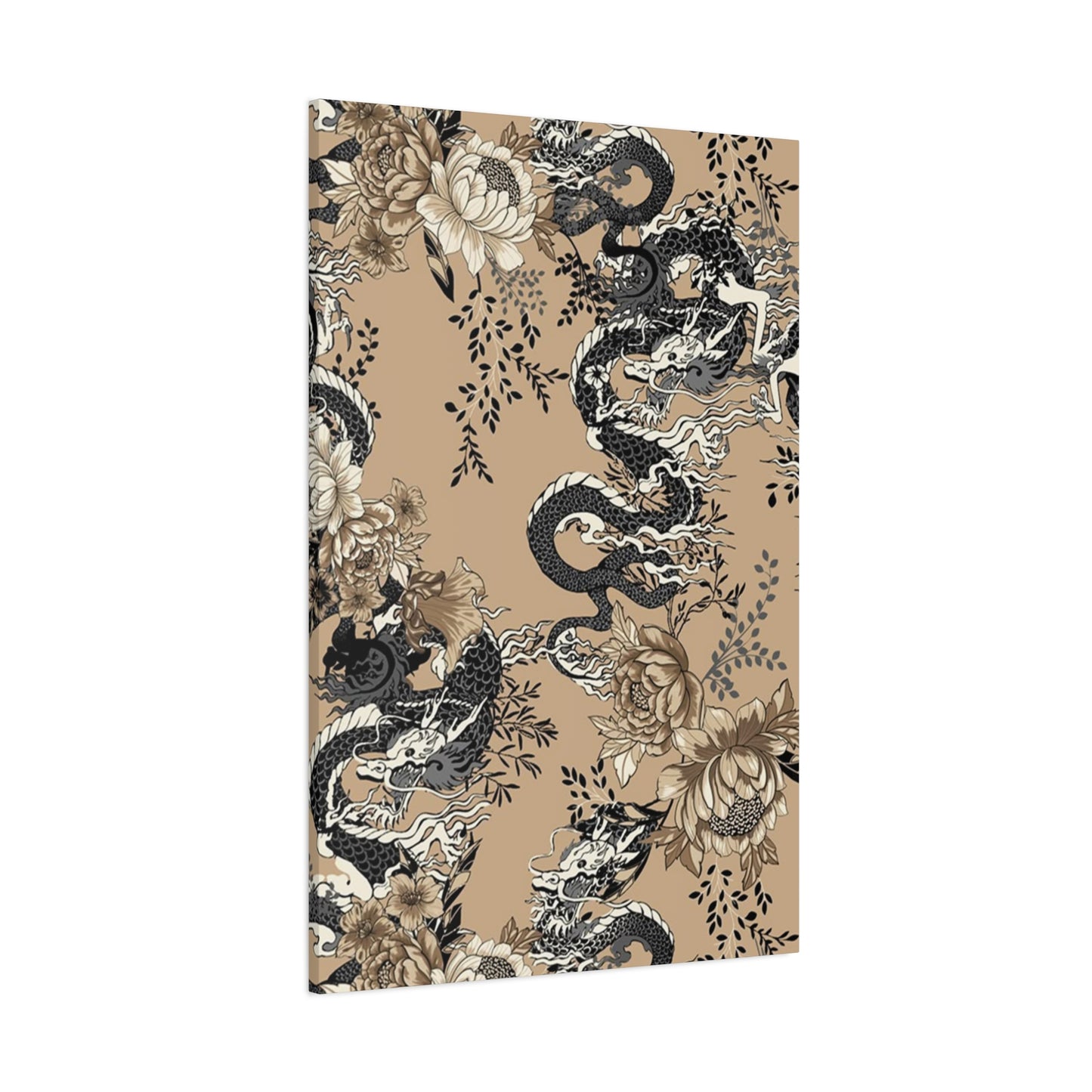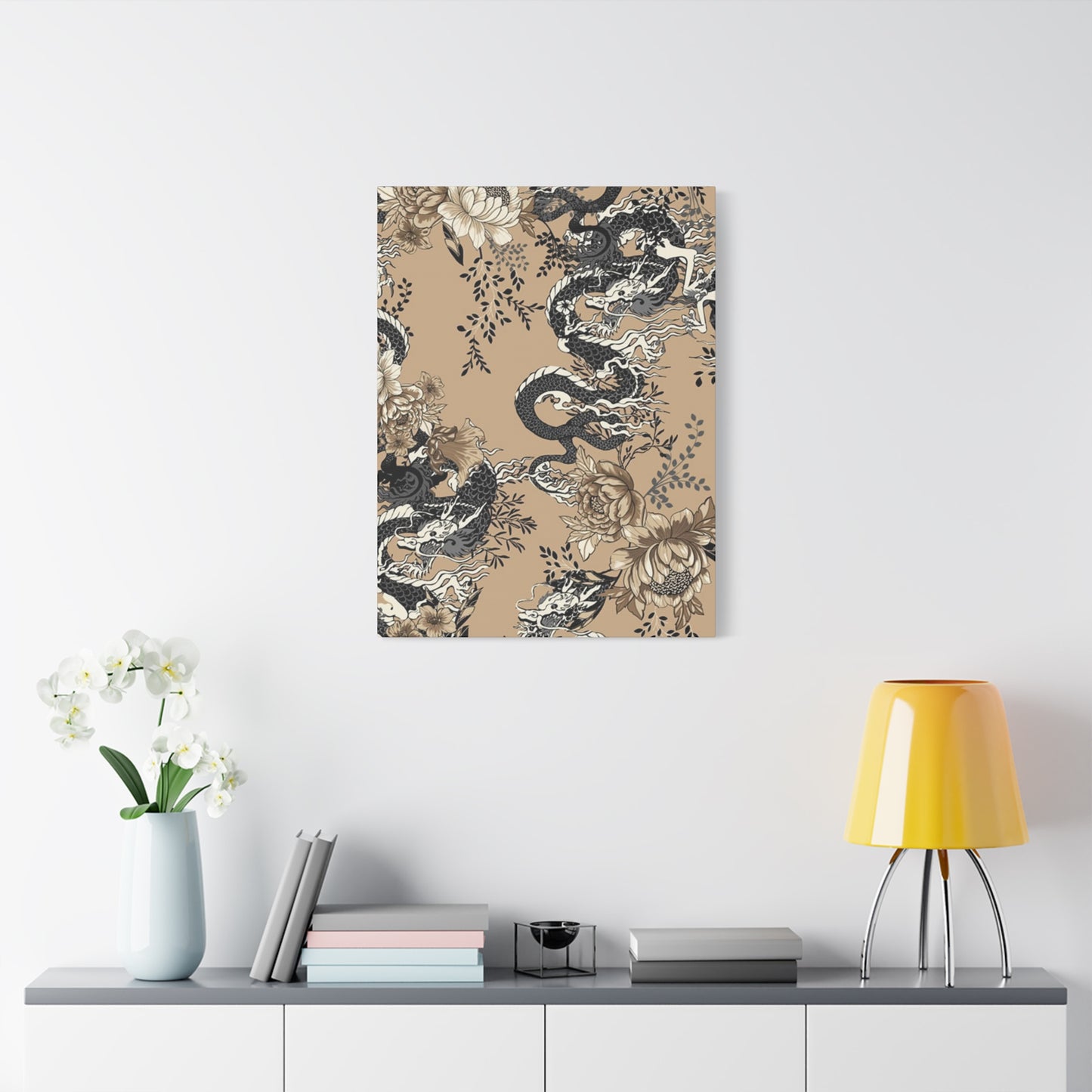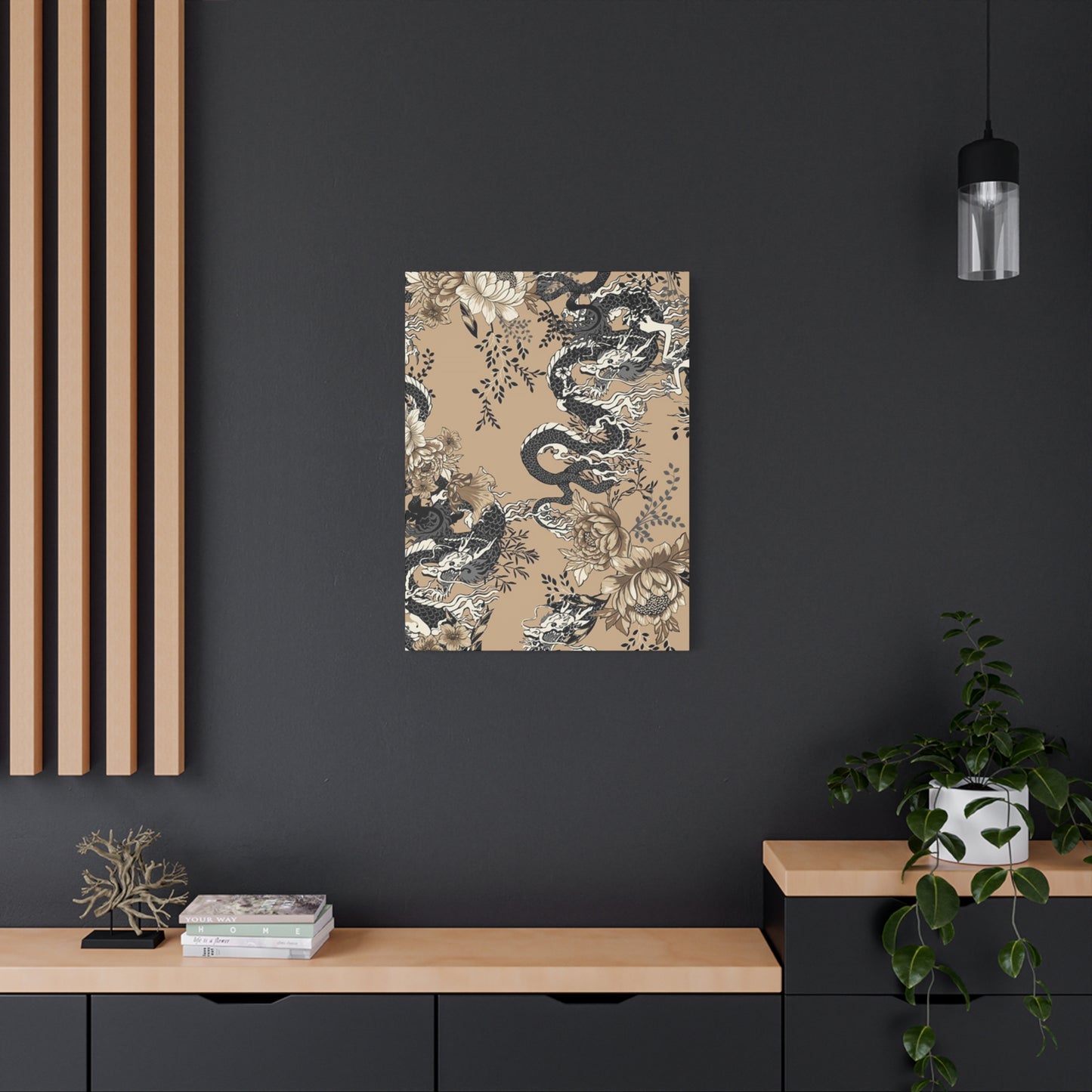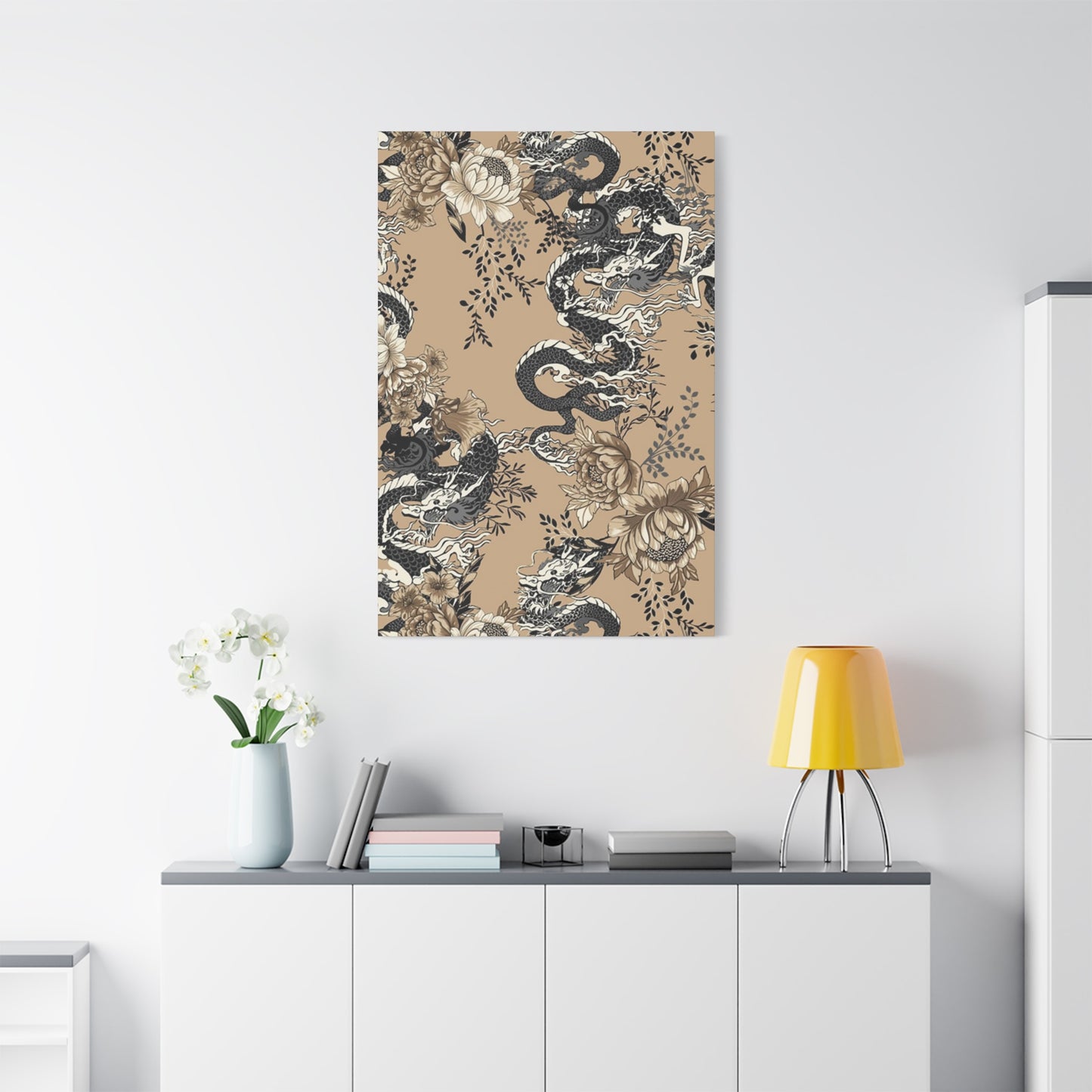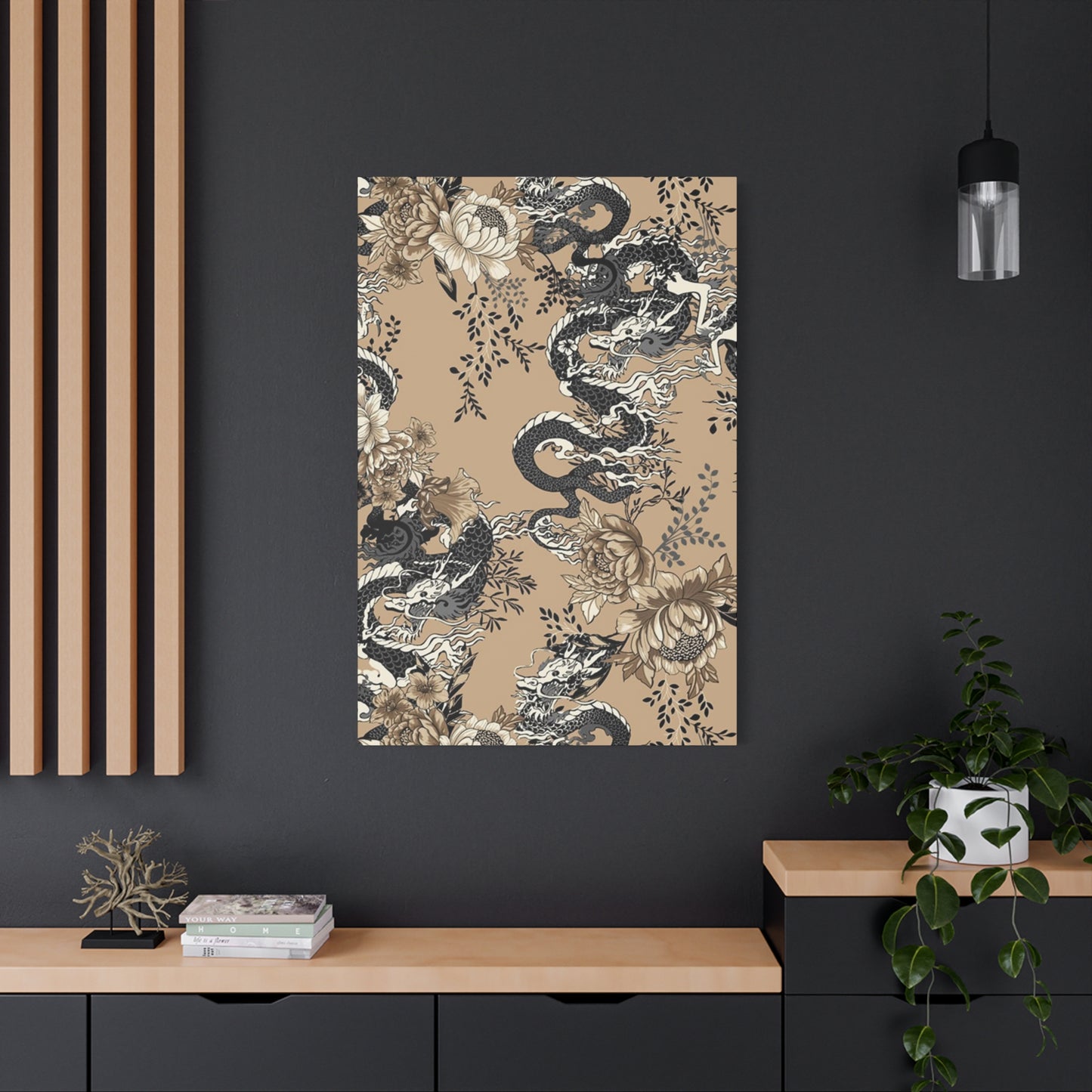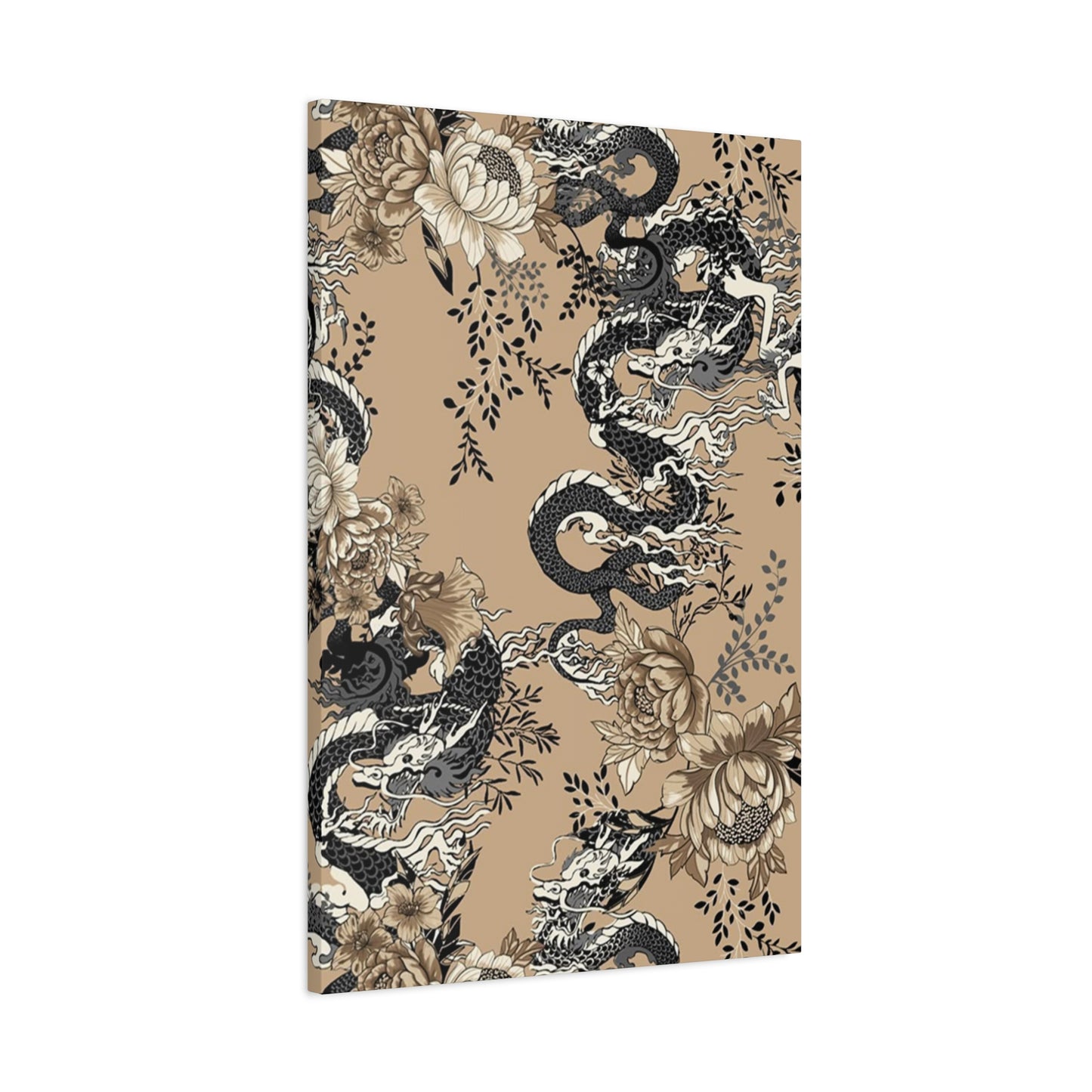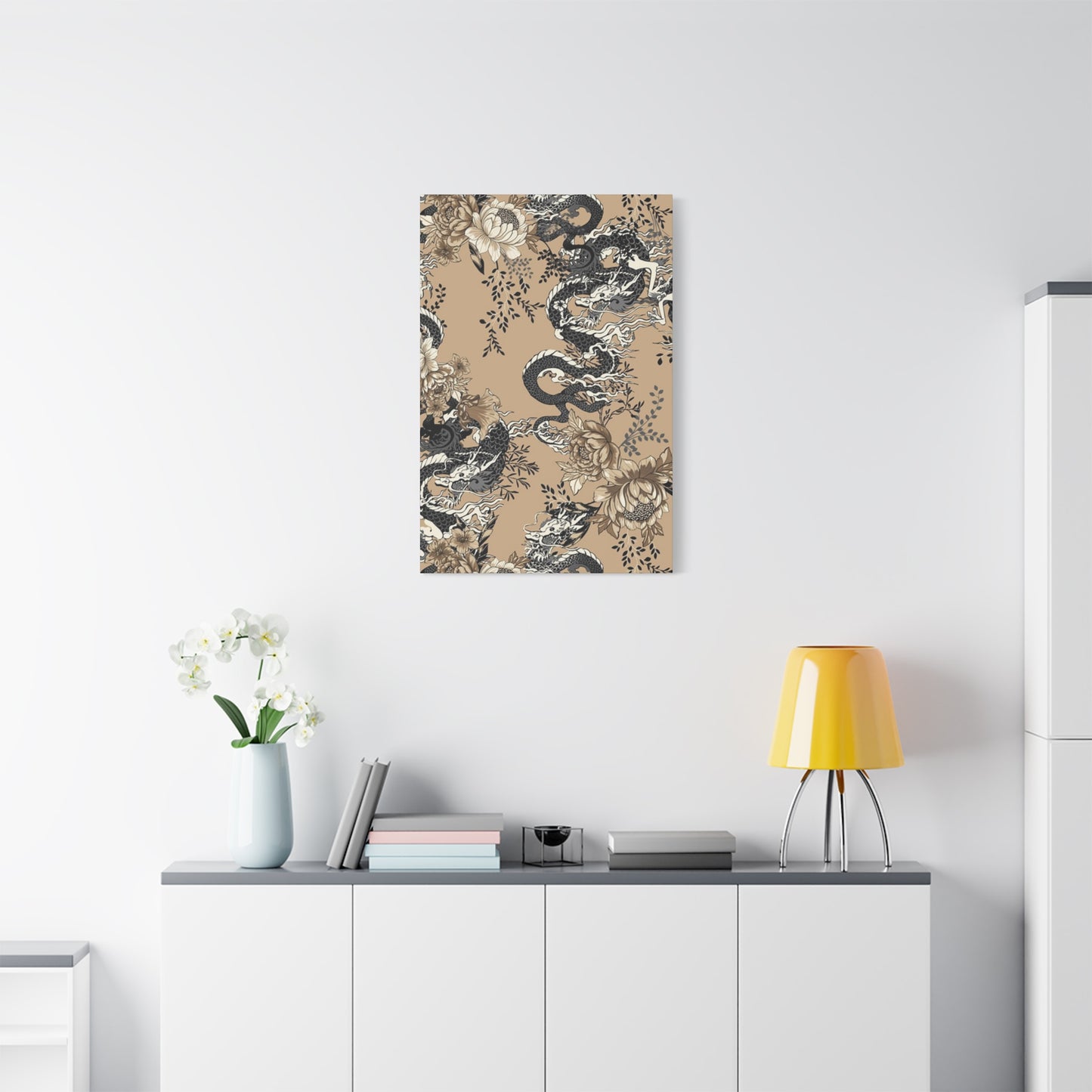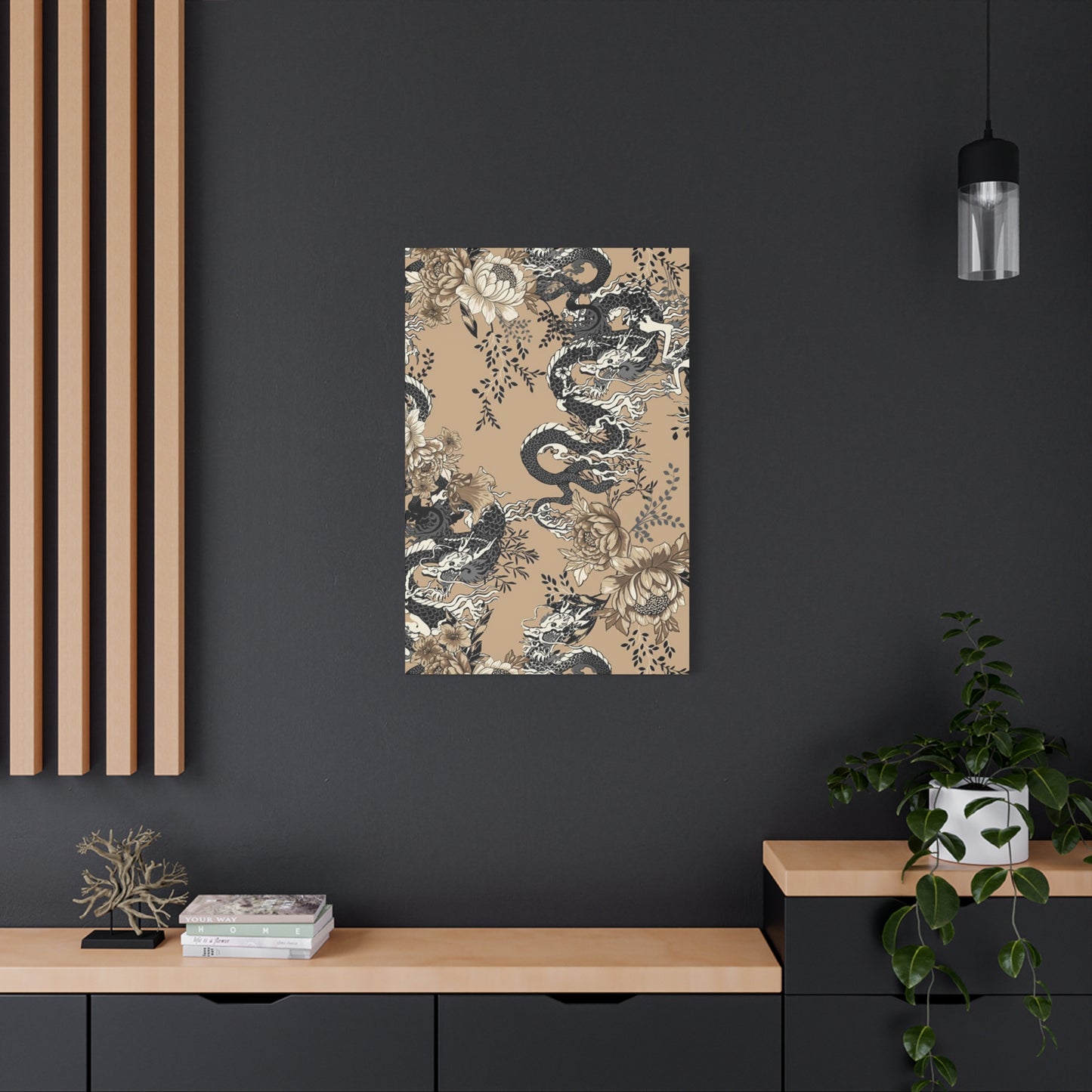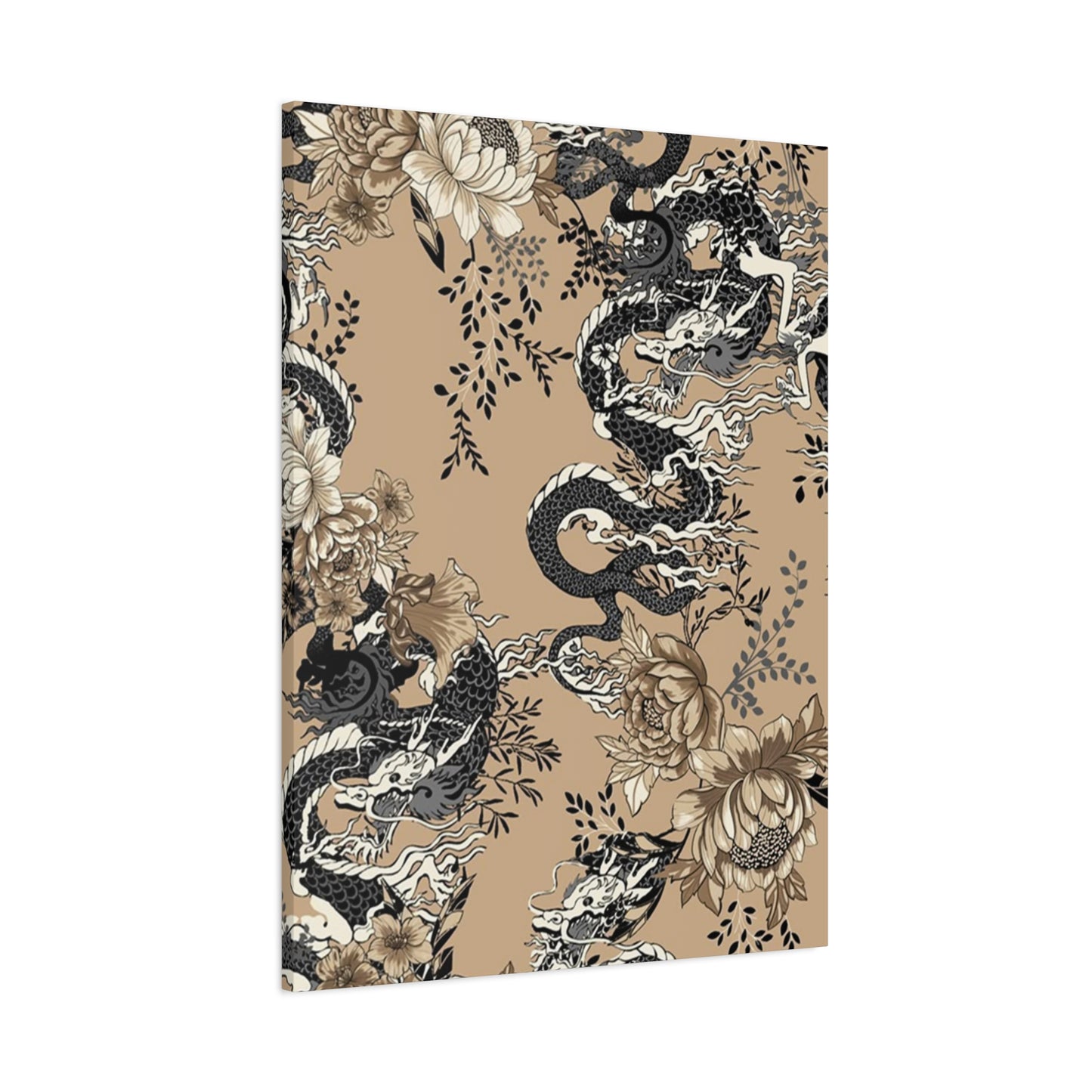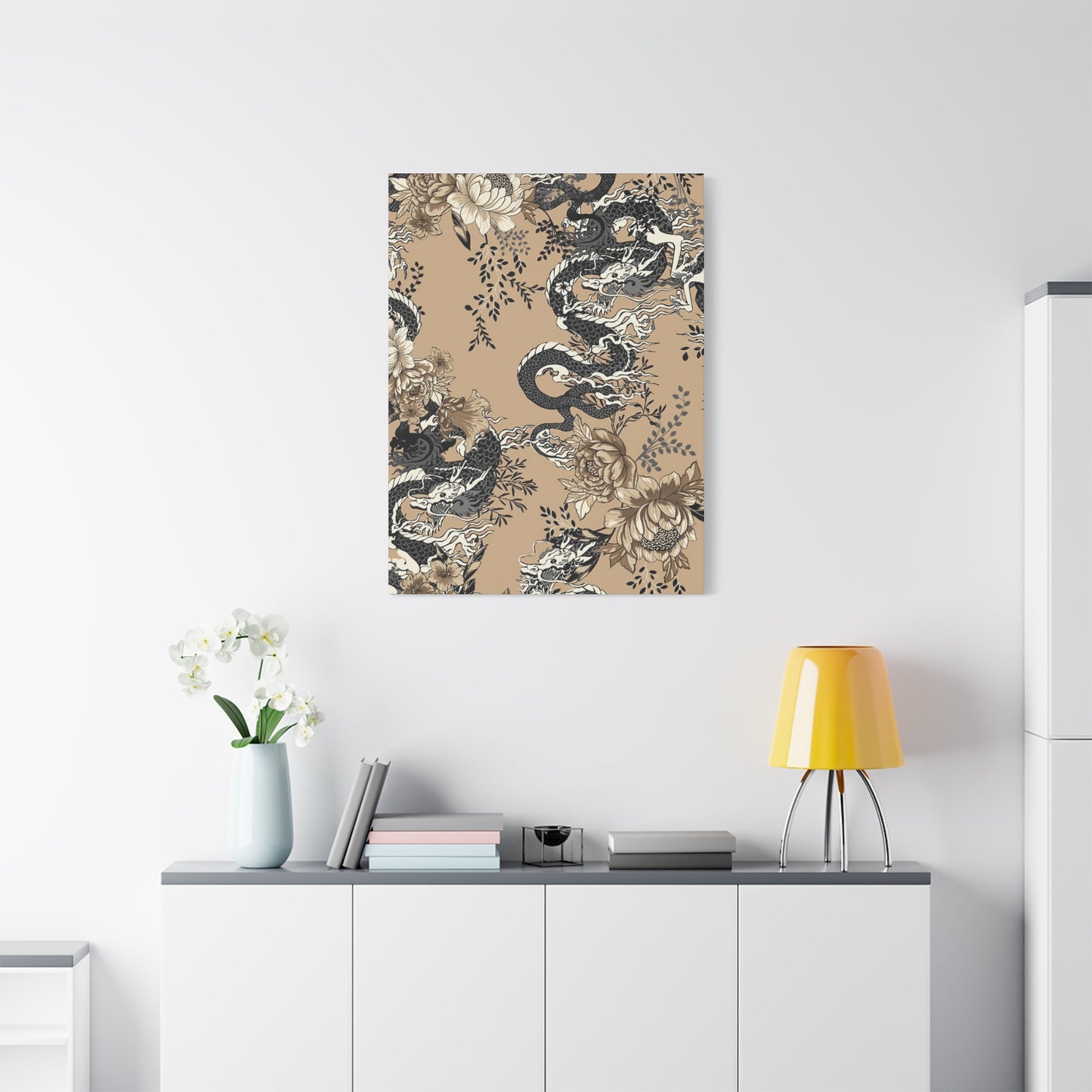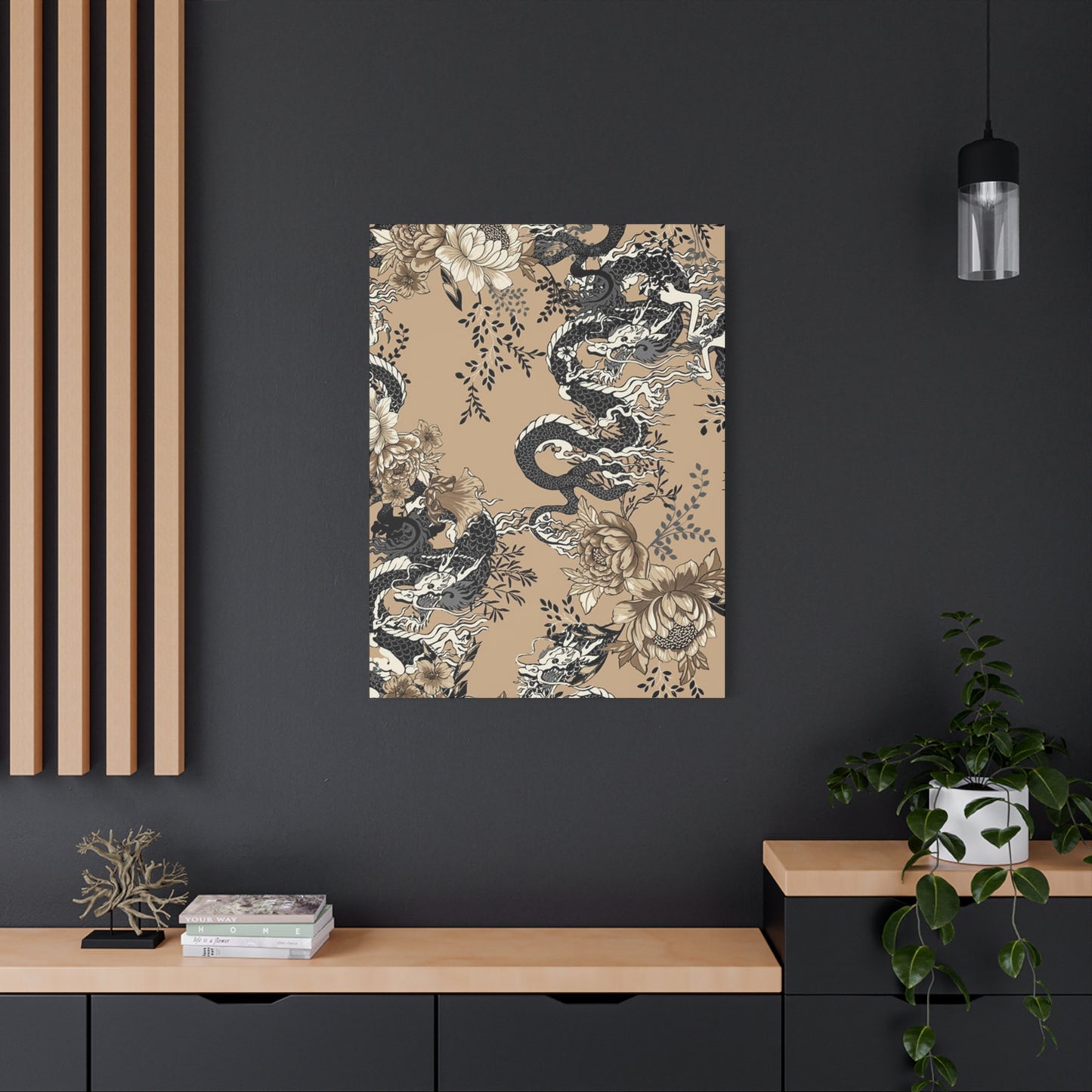Mystical Dragon and Snake Wall Art: Creating Powerful Visual Statements in Your Home
Dragon and snake imagery has captivated human imagination for millennia, representing power, wisdom, transformation, and mystical energy across countless cultures. These magnificent creatures, whether depicted separately or intertwined in artistic harmony, create compelling visual narratives that can transform any environment into a more dynamic and spiritually resonant location. The artistic representation of these mythical beings has evolved significantly throughout history, from ancient cave paintings to contemporary digital masterpieces, each iteration reflecting the cultural values and artistic sensibilities of its time.
The allure of dragon and snake artwork lies in their symbolic complexity and visual dynamism. Dragons, often portrayed as majestic beings of immense power and wisdom, represent strength, protection, and good fortune in many Eastern cultures, while Western interpretations frequently emphasize their fierce and formidable nature. Snakes, with their sinuous forms and profound symbolic meanings, embody transformation, healing, renewal, and the cyclical nature of life and death. When these powerful symbols are combined in artistic expressions, they create pieces that resonate on both aesthetic and spiritual levels.
Contemporary artists and homeowners alike are discovering the transformative power of incorporating dragon and snake motifs into their living environments. These artistic pieces serve not merely as decorative elements but as focal points that can dramatically alter the energy and atmosphere of a room. The flowing lines of serpentine forms and the dynamic energy of draconic imagery can create visual movement that draws the eye and engages the imagination, making them ideal choices for those seeking to create environments that are both visually striking and emotionally engaging.
The versatility of dragon and snake artwork extends beyond traditional canvas paintings to include metal sculptures, fabric tapestries, ceramic tiles, and mixed-media installations. This diversity allows collectors and decorators to find pieces that perfectly complement their existing aesthetic while adding layers of symbolic meaning and visual interest. Whether rendered in vibrant colors that command attention or subtle tones that whisper their presence, these artistic representations can adapt to various decorating styles and personal preferences.
Modern interpretations of these ancient symbols often blend traditional iconography with contemporary artistic techniques, creating pieces that honor historical significance while speaking to modern sensibilities. Digital artists, painters, sculptors, and mixed-media creators are pushing the boundaries of how these creatures can be represented, experimenting with new materials, techniques, and conceptual frameworks that keep these timeless symbols relevant and engaging for contemporary audiences.
The psychological impact of dragon and snake imagery should not be underestimated. These powerful symbols can evoke feelings of strength, protection, mystery, and transformation, making them particularly appealing to individuals going through periods of change or seeking to create environments that inspire personal growth and empowerment. The presence of such artwork can serve as daily reminders of one's own inner strength and potential for transformation, creating a supportive and inspiring environment for personal development.
Blending Classic and Contemporary Aesthetics in Mythical Creature Art
The fusion of traditional and modern artistic approaches in dragon and snake artwork creates fascinating visual dialogues between past and present. Classical representations of these creatures often draw from centuries-old artistic traditions, featuring ornate details, symbolic colors, and compositional elements rooted in cultural heritage. These traditional approaches typically emphasize the spiritual and symbolic aspects of the creatures, often incorporating elements like clouds, flames, water, and celestial bodies that enhance their mythical qualities.
Contemporary interpretations, however, often embrace minimalism, abstract forms, geometric patterns, and unconventional color palettes. Modern artists might deconstruct the traditional dragon form into flowing abstract shapes or present snakes through purely geometric representations. This contemporary approach allows for greater personal interpretation and can make these ancient symbols more accessible to modern audiences who might find traditional representations too ornate or culturally specific.
The most compelling pieces often emerge from the thoughtful combination of these approaches. An artist might use traditional symbolic colors like gold and red for a dragon while employing modern abstract techniques to create the form. Similarly, a snake might be rendered with classical attention to anatomical detail while being placed within a contemporary minimalist composition. This blending creates artwork that honors historical significance while remaining fresh and relevant to modern viewers.
When incorporating mixed-style pieces into living environments, consider how the traditional elements can provide gravitas and depth while modern elements keep the artwork feeling current and personally relevant. A dining room might benefit from a piece that combines traditional dragon imagery with modern geometric backgrounds, creating a conversation piece that bridges cultural and temporal divides. Living rooms can accommodate larger pieces that blend ornate traditional details with contemporary color schemes or compositional approaches.
The successful integration of mixed-style dragon and snake artwork requires careful consideration of the surrounding environment. Traditional elements in the artwork should complement rather than compete with existing classical elements in the room, while modern aspects should enhance contemporary furnishings and architectural features. This balance creates cohesive environments where the artwork feels integrated rather than imposed.
Color coordination becomes particularly important when working with mixed-style pieces. Traditional symbolic colors can be preserved while being presented in modern contexts, or contemporary color palettes can be applied to traditional forms. The key is ensuring that the color choices support both the artistic integrity of the piece and the overall aesthetic of the room.
Texture also plays a crucial role in successfully blending traditional and modern elements. Traditional techniques often emphasize rich textures and layered details, while modern approaches might favor smooth surfaces and clean lines. Pieces that successfully combine these approaches often create interesting textural contrasts that add visual depth and tactile appeal to the artwork.
Incorporating Mythical Creature Artwork in Residential Environments
The strategic placement of dragon and snake artwork in living environments requires understanding how these powerful images interact with both the physical dimensions and emotional atmosphere of different rooms. Living rooms, as central gathering areas, provide excellent opportunities for showcasing larger, more dramatic pieces that can serve as conversation starters and focal points for social interaction. The living room's typically expansive wall areas can accommodate substantial canvas prints or multi-panel installations that allow the full impact of dragon and snake imagery to be appreciated.
When selecting pieces for living rooms, consider the viewing angles from different seating arrangements. Dragons and snakes, with their elongated forms, often work well as horizontal pieces above sofas or as vertical elements flanking fireplaces or entertainment centers. The dynamic nature of these creatures' forms can help break up large wall expanses while adding movement and energy to otherwise static arrangements.
Bedrooms present different opportunities for incorporating dragon and snake imagery. These more private areas allow for more personal and intimate interpretations of these powerful symbols. Smaller, more contemplative pieces above beds can create focal points that inspire dreams and reflection without overwhelming the peaceful atmosphere necessary for rest. The transformative symbolism of snakes and the protective qualities often associated with dragons can make them particularly appropriate for bedroom environments where personal growth and renewal occur.
Family rooms and recreational areas can accommodate more playful or dynamic interpretations of dragon and snake themes. These environments, designed for relaxation and entertainment, can handle artwork with more vibrant colors or dramatic compositions. Multi-generational households might particularly appreciate pieces that appeal to both adults and children, creating shared points of interest that can spark imagination and storytelling.
Hallways and transitional areas benefit from dragon and snake artwork that creates visual flow and continuity throughout the home. The serpentine nature of snake imagery naturally complements the linear nature of corridors, while dragon imagery can create dramatic punctuation points at the ends of hallways or at stair landings. These transitional areas are also ideal for displaying collections of smaller pieces that can be appreciated individually or as cohesive groupings.
The scale relationship between artwork and room dimensions is crucial for achieving balanced compositions. Large rooms can support substantial pieces that might overwhelm smaller areas, while intimate rooms benefit from more modestly sized artwork that creates cozy focal points without dominating the environment. Consider the relationship between the artwork's visual weight and the room's other elements to ensure harmonious integration.
Lighting considerations become particularly important when displaying dragon and snake artwork. These subjects often benefit from dramatic lighting that can enhance their mythical qualities and visual impact. Track lighting, picture lights, or strategically placed accent lighting can bring out textural details and color nuances that might be lost under general room lighting. The interplay of light and shadow can also enhance the sense of movement and dimensionality in these dynamic subjects.
Exploring Artistic Interpretations from Abstract to Photorealistic
The spectrum of artistic interpretation for dragon and snake imagery ranges from highly abstract conceptual pieces to meticulously detailed realistic renderings, each approach offering unique advantages and aesthetic experiences. Abstract interpretations free these mythical creatures from literal representation, allowing artists to focus on essential qualities like movement, energy, power, and transformation through color, form, and composition. These pieces often use flowing lines, dynamic shapes, and symbolic colors to suggest rather than explicitly depict their subjects.
Abstract dragon and snake artwork can be particularly effective in contemporary environments where literal representations might feel out of place. The flowing, organic forms naturally associated with snakes translate beautifully into abstract compositions that emphasize movement and rhythm. Dragon imagery, when abstracted, can become expressions of pure energy and power, using color and form to convey the essence of these mythical beings without relying on traditional iconographic elements.
The advantage of abstract interpretations lies in their versatility and personal interpretability. Viewers can project their own meanings and associations onto the artwork, creating more personal connections with the pieces. This interpretative flexibility makes abstract dragon and snake artwork suitable for a wider range of decorating styles and personal preferences, as the absence of literal representation allows the pieces to complement various aesthetic approaches.
Realistic interpretations, conversely, celebrate the detailed beauty and symbolic richness of traditional dragon and snake imagery. These pieces often showcase incredible technical skill and attention to detail, creating artwork that can be appreciated for both its symbolic content and artistic execution. Realistic dragon artwork might include every scale, every flame detail, and every atmospheric element that contributes to the creature's mythical presence.
Photorealistic snake imagery can be particularly striking, showcasing the natural beauty of serpentine forms while maintaining their symbolic significance. The interplay of light on scales, the subtle gradations of color, and the elegant curves of serpentine bodies create visually compelling pieces that celebrate both natural beauty and symbolic meaning. These realistic approaches can make mythical subjects feel more tangible and immediate to viewers.
Semi-abstract approaches often provide the most accessible middle ground between these extremes. These pieces maintain recognizable elements of dragon and snake imagery while incorporating abstract techniques that add interpretative depth and contemporary relevance. A semi-abstract dragon might retain its essential form while being rendered through geometric shapes or simplified color planes. Snake imagery might preserve the creature's essential sinuous quality while being presented through stylized or impressionistic techniques.
The choice between abstract and realistic approaches should consider both personal preference and environmental context. Contemporary, minimalist environments often benefit from more abstract interpretations that complement clean lines and simplified forms. Traditional or eclectic decorating styles might accommodate more realistic pieces that celebrate detailed craftsmanship and historical artistic traditions.
Mixed approaches within single pieces can create particularly dynamic and engaging artwork. A piece might combine realistic dragon details with abstract background elements, or present realistic snake forms within stylized or fantastical environments. These hybrid approaches can create artwork that appeals to multiple aesthetic preferences while offering rich visual experiences that reward closer examination.
Creative Projects for Handmade Mythical Artwork
Creating personalized dragon and snake artwork through do-it-yourself projects offers unique opportunities for artistic expression while ensuring that the finished pieces perfectly complement individual aesthetic preferences and environmental needs. These creative endeavors allow for complete customization of size, color, style, and symbolic content while providing the satisfaction of displaying personally crafted artwork in living environments.
Canvas painting projects represent perhaps the most accessible entry point for creating custom dragon and snake artwork. Acrylic paints offer vibrant colors and forgiving working properties that make them ideal for both beginners and experienced artists. Starting with simple compositions allows novice painters to build confidence while creating meaningful artwork. A flowing snake silhouette filled with gradient colors can create striking visual impact while requiring only basic painting techniques.
More ambitious canvas projects might incorporate mixed-media elements like metallic leaf, textured paste, or collage materials that add dimensional interest and visual complexity. Dragons, with their traditionally ornate appearance, lend themselves particularly well to mixed-media approaches that can incorporate metallic elements, fabric textures, or found objects that enhance their mythical qualities.
Stenciling techniques offer another accessible approach to creating custom dragon and snake artwork. Pre-made stencils can be combined and layered to create complex compositions, while custom-cut stencils allow for completely personalized designs. Multiple stencil layers can create sophisticated color relationships and dimensional effects that rival more complex painting techniques. This approach is particularly effective for creating series of related pieces that can be displayed as coordinated groupings.
Digital creation followed by professional printing opens endless possibilities for customization while maintaining high-quality results. Digital tools allow for experimentation with colors, compositions, and effects that would be difficult or impossible to achieve through traditional media. These digital creations can then be printed on various substrates including canvas, metal, or specialty papers that enhance the final artwork's visual impact and durability.
Fabric-based projects offer unique textural qualities and installation flexibility. Dragon and snake designs can be created through fabric painting, appliqué techniques, or mixed-media approaches that combine various textile elements. These pieces can be mounted traditionally or displayed as tapestries that add softness and warmth to environments while maintaining the powerful imagery of mythical creatures.
Three-dimensional projects expand creative possibilities beyond traditional flat artwork. Wire sculptures can capture the essential flowing forms of snakes or the dynamic energy of dragons while creating pieces that interact with light and shadow in compelling ways. Papier-mâché techniques allow for the creation of dimensional dragon and snake forms that can be painted and finished to complement specific decorating schemes.
Mosaic projects, whether created with traditional tile, broken ceramics, or unconventional materials, can transform dragon and snake imagery into richly textured artworks that play beautifully with light. The fragmented nature of mosaic construction naturally complements the scaled textures associated with dragons and snakes while allowing for incredible color complexity and visual richness.
Woodworking enthusiasts can create carved or constructed dragon and snake artwork that brings natural material warmth to mythical subjects. Relief carving techniques can create dimensional artwork suitable for wall display, while constructed pieces might incorporate multiple wood types to create color and texture variations that enhance the creatures' natural qualities.
Symbolic Significance Across Global Traditions
The cultural interpretations and symbolic meanings attributed to dragons and snakes vary dramatically across different global traditions, creating rich layers of significance that can inform artistic choices and personal connections to these powerful images. Understanding these diverse cultural perspectives enhances appreciation for dragon and snake artwork while providing deeper context for their placement and interpretation in contemporary environments.
Eastern traditions, particularly Chinese culture, view dragons as supremely auspicious beings representing imperial power, good fortune, strength, and wisdom. Chinese dragons are traditionally associated with water, weather control, and agricultural abundance, making them symbols of prosperity and harmony with natural forces. The Chinese dragon's serpentine body, typically depicted without wings, emphasizes flow and movement while incorporating elements like pearl-chasing that symbolize the pursuit of wisdom and enlightenment.
Japanese dragon interpretations share many characteristics with Chinese traditions while incorporating unique cultural elements. Japanese dragons often inhabit bodies of water and are associated with rainfall, agriculture, and natural harmony. The artistic representation of Japanese dragons frequently emphasizes their connection to specific geographical locations, creating place-based spiritual significance that can inspire artwork celebrating regional or personal connections to particular environments.
Korean dragon mythology presents these creatures as benevolent beings capable of transformation and weather control. Korean artistic traditions often emphasize the dragon's ability to move between earth and heaven, making them powerful symbols of spiritual aspiration and transformation. These interpretative traditions can inspire artwork that emphasizes vertical movement and spiritual transcendence.
Western dragon traditions present markedly different symbolic content, often emphasizing the creature's fearsome power and association with treasure guarding. European dragons are frequently depicted as challenges to be overcome, representing obstacles, fears, or negative forces that must be conquered. However, Celtic dragon traditions often present more positive interpretations, with dragons serving as guardians of sacred knowledge and natural wisdom.
Snake symbolism demonstrates equally rich cultural variation. Ancient Egyptian traditions revered snakes as symbols of pharaonic power and divine protection, with the cobra serving as a royal emblem. Greek mythology presents snakes as symbols of both healing (as seen in the caduceus) and hidden wisdom, while also acknowledging their potentially dangerous nature. Hindu and Buddhist traditions often present snakes as symbols of kundalini energy, spiritual awakening, and the cyclical nature of existence.
Native American traditions offer diverse interpretations of both dragons (often manifested as feathered serpents) and snakes, frequently emphasizing their connections to earth wisdom, healing, and natural cycles. These traditions often present serpentine creatures as mediators between human and natural worlds, making them powerful symbols of ecological harmony and spiritual balance.
African traditions present equally diverse interpretations, with various cultures viewing snakes as ancestors, fertility symbols, or guardians of sacred knowledge. The rainbow serpent common to many African mythologies represents the connection between earthly and celestial realms while symbolizing the life-giving properties of water and seasonal cycles.
Contemporary interpretations of these traditional symbols often blend multiple cultural perspectives while adding personal meaning layers. Modern dragon and snake artwork might incorporate symbolic elements from various traditions while addressing contemporary themes like environmental consciousness, personal transformation, or spiritual seeking. This cultural synthesis creates artwork that honors traditional wisdom while remaining relevant to contemporary concerns.
The selection of dragon and snake artwork can reflect personal cultural connections, spiritual interests, or aesthetic preferences while acknowledging the rich symbolic heritage these creatures represent. Understanding these diverse cultural interpretations can guide choices about color, composition, and symbolic elements while enhancing personal connection to the chosen artwork.
Scale Considerations for Canvas Prints and Displays
The dimensional aspects of dragon and snake canvas prints significantly impact their visual effectiveness and integration within living environments. Large-scale pieces create commanding presence that can transform entire rooms, while smaller works offer intimate viewing experiences that invite closer examination and personal reflection. Understanding how scale affects both visual impact and practical placement ensures optimal selection and display of these powerful artistic subjects.
Oversized canvas prints, typically measuring 40 inches or larger in their longest dimension, create dramatic focal points that can anchor entire room compositions. These substantial pieces work particularly well in living rooms with high ceilings, master bedrooms with expansive wall areas, or dining rooms where they can be appreciated by groups. The impressive scale allows for intricate detail visibility while creating immersive viewing experiences that can transport observers into the mythical worlds depicted.
Large dragon imagery benefits from substantial scale that allows appreciation of complex details like individual scales, atmospheric effects, and ornate decorative elements. The dynamic nature of dragon compositions often requires adequate size to properly convey the sense of movement and power these creatures represent. Similarly, large snake images can showcase the subtle gradations of color and texture that make serpentine subjects visually compelling while emphasizing their flowing, rhythmic forms.
The wall area requirements for large-scale pieces must be carefully considered during selection and planning. These pieces typically require unobstructed viewing distances of at least 6-8 feet to be properly appreciated, making them suitable for rooms with adequate circulation areas. The surrounding wall treatment should complement rather than compete with large-scale artwork, often benefiting from simplified color schemes and minimal decorative elements that allow the artwork to dominate the visual field.
Medium-scale pieces, ranging from 20-40 inches, offer versatility that makes them suitable for various room sizes and viewing situations. These dimensions work well above furniture pieces, in hallways, or as components of larger gallery wall arrangements. Medium-scale dragon and snake artwork can provide substantial visual impact without overwhelming smaller rooms or competing with other decorative elements.
The advantage of medium-scale pieces lies in their adaptability to different viewing distances and lighting conditions. They can be appreciated both as room-scale design elements and as detailed artworks that reward closer examination. This flexibility makes them excellent choices for multi-functional areas where viewing distances and purposes might vary throughout the day.
Small-scale pieces, under 20 inches, create opportunities for intimate viewing experiences and detailed artistic appreciation. These sizes work particularly well in personal areas like bedrooms, home offices, or reading nooks where close viewing is natural and comfortable. Small dragon and snake images can showcase intricate artistic techniques and subtle details that might be lost in larger-scale presentations.
The collection potential of small-scale pieces allows for the development of thematic groupings that can evolve over time. Series of related dragon or snake images can be displayed together to create visual narratives or stylistic progressions that wouldn't be practical with larger pieces. These groupings can be reconfigured and expanded as personal taste and collection grow.
Proportion relationships between artwork and surrounding elements require careful consideration regardless of scale. Furniture pieces should complement rather than compete with artwork dimensions, while room proportions should support the chosen scale. Over-scaled pieces in small rooms can create cramped feelings, while under-scaled pieces in large rooms can appear lost and ineffective.
Multiple piece installations offer opportunities to work with scale relationships within single compositions. Triptych presentations can create substantial visual impact while maintaining individual piece manageability. Asymmetrical groupings of different-sized pieces can create dynamic compositions that add visual interest while accommodating various wall configurations and viewing requirements.
Textural Enhancement Techniques for Reptilian Art Features
The incorporation of textural elements in dragon and snake artwork creates multidimensional viewing experiences that enhance the natural characteristics these creatures possess. Texture serves not merely as visual embellishment but as a means of creating tactile interest and depth that can make mythical subjects feel more tangible and immediate to viewers. The strategic use of texture can highlight specific features while creating overall compositions that reward both distant viewing and close examination.
Dragon scales represent perhaps the most obvious opportunity for textural enhancement. Traditional artistic approaches often render scales through careful painting techniques, but contemporary mixed-media approaches can incorporate actual textural elements that create dimensional scale patterns. Metallic leafing techniques can be applied selectively to create scales that catch and reflect light, adding luminous qualities that enhance the dragon's mythical nature. Raised paste or modeling compounds can create actual dimensional variations that cast subtle shadows and create authentic scale-like textures.
The wings of dragons provide additional opportunities for textural creativity. Membrane textures can be suggested through varied paint application techniques, while structural elements like wing bones or veining can be emphasized through linear textural treatments. Mixed-media approaches might incorporate translucent materials that create wing-like qualities while adding dimensional interest and light interaction possibilities.
Snake skin textures require different approaches that emphasize the smooth, flowing qualities of serpentine surfaces while acknowledging the subtle pattern variations that make snake imagery visually compelling. Graduated textural treatments can follow the snake's form while creating visual movement that enhances the creature's natural grace and fluidity. Metallic highlights applied selectively can create the lustrous quality associated with healthy snake skin while adding visual interest that draws the eye along the serpentine form.
The environmental elements surrounding dragons and snakes in artwork provide additional textural possibilities. Flames, often associated with dragon imagery, can be rendered through varied textural techniques that create the appearance of flickering movement and heat distortion. Layered transparent glazes can create flame-like depth and luminosity, while heavier textural treatments can suggest the solid energy of magical fire.
Water elements, frequently associated with both dragons and snakes in various cultural traditions, offer opportunities for smooth, flowing textural treatments that contrast beautifully with the more complex textures of the creatures themselves. Glossy mediums can create water-like surfaces that reflect surrounding elements while adding movement and fluidity to compositions.
Rock and earth textures provide grounding elements that can anchor fantastical subjects while creating compositional balance. Heavy texture applications can create convincing stone or earth surfaces that provide visual weight and stability to compositions dominated by the dynamic energy of dragons and snakes. These textural contrasts help create visual hierarchy and compositional balance.
Atmospheric effects like clouds, mist, or magical energy can be enhanced through subtle textural variations that create depth and movement without overwhelming the main subjects. Light texture applications can suggest ethereal qualities while heavier treatments can create more substantial atmospheric presence.
Tool selection significantly affects textural results in dragon and snake artwork. Traditional brushes create different textural effects depending on their bristle type, shape, and loading technique. Palette knives can create broader textural areas and more geometric patterns, while sponges and other non-traditional tools can create organic, irregular textures that complement natural subject matter.
Layering techniques allow for complex textural development that can create rich, sophisticated surface qualities. Initial textural applications can provide base patterns that are then modified or enhanced through subsequent layers. This approach allows for the development of complex color and texture relationships that create visual depth and interest.
The integration of textural elements should support rather than dominate the overall artistic composition. Texture should enhance the natural qualities of dragons and snakes while creating visual interest that draws viewers into closer examination of the artwork. The goal is creating pieces that reward both initial impact viewing and continued detailed appreciation.
Maintenance and Conservation of Canvas Artwork
Proper care and maintenance of dragon and snake canvas artwork ensures their longevity and continued visual impact while protecting the investment these pieces represent. Canvas artworks face various environmental challenges that can affect both their appearance and structural integrity over time. Understanding appropriate care techniques and preventive measures helps preserve these powerful artistic statements for years of continued enjoyment.
Environmental factors play crucial roles in canvas artwork preservation. Temperature fluctuations can cause canvas expansion and contraction that may lead to cracking or paint separation over time. Maintaining consistent indoor temperatures between 65-75 degrees Fahrenheit helps minimize these structural stresses while creating optimal viewing conditions. Extreme temperature variations should be avoided, particularly during seasonal transitions when heating and cooling systems create significant environmental changes.
Humidity control represents another critical factor in canvas preservation. High humidity can promote mold growth and cause canvas sagging, while extremely dry conditions can make canvas brittle and prone to cracking. Ideal relative humidity levels range between 45-55%, though slight variations outside this range are generally acceptable. Dehumidifiers or humidifiers can help maintain optimal conditions in areas where natural humidity levels are problematic.
Light exposure poses significant long-term risks to canvas artwork, particularly pieces featuring vibrant colors or organic pigments. Ultraviolet radiation causes fading and color shifts that can dramatically alter the appearance of dragon and snake artwork over time. Direct sunlight should be avoided entirely, while artificial lighting should utilize UV-filtering bulbs or protective glazing when possible. LED lighting systems produce minimal UV radiation while providing excellent color rendering for artwork display.
Dust accumulation represents a common but manageable threat to canvas artwork. Regular gentle cleaning with soft, dry brushes removes surface dust without damaging paint layers or canvas fibers. Vacuum cleaning using brush attachments held at safe distances can remove dust from surrounding areas without directly contacting the artwork surface. Professional cleaning services may be appropriate for valuable pieces or when significant soil buildup occurs.
Physical protection during handling and moving requires careful attention to prevent mechanical damage. Canvas edges are particularly vulnerable to tears and punctures, making proper support essential during any handling activities. Two-person carrying techniques distribute weight and minimize flexing stresses that could damage canvas or stretcher assemblies. Professional art handling services should be considered for valuable or large-scale pieces.
Framing considerations affect both protection and preservation of canvas artwork. Proper framing provides physical protection while creating environmental buffers that moderate temperature and humidity variations. Acid-free matting materials prevent chemical interactions that could cause discoloration or deterioration over time. Conservation-grade framing materials and techniques provide maximum protection for valuable artwork while maintaining aesthetic presentation quality.
Storage requirements become important for artwork that may be rotated or temporarily removed from display. Canvas pieces should be stored flat or properly supported vertically to prevent sagging or deformation. Acid-free tissue paper or cloth covers protect surfaces from dust and physical contact during storage. Climate-controlled storage areas prevent environmental damage while providing secure protection during non-display periods.
Regular inspection schedules help identify potential problems before they become serious conservation issues. Monthly visual inspections can detect changes in color, surface condition, or structural integrity that might require professional attention. Documentation through photography creates historical records that help track condition changes over time while providing reference materials for conservation professionals if needed.
Professional conservation services should be consulted for valuable artwork or when problems exceed basic maintenance capabilities. Qualified conservators can address structural issues, color restoration, or environmental damage that requires specialized knowledge and materials. Early intervention often prevents minor problems from developing into major conservation challenges that could affect artwork value or appearance.
Insurance considerations become important for valuable dragon and snake artwork, particularly original pieces or limited-edition prints. Proper documentation including photographs, purchase records, and condition reports supports insurance claims while providing evidence of ownership and value. Regular appraisals ensure adequate coverage while providing current market value information for collection planning purposes.
Gifting Ideas for Mythical Creature Enthusiasts
Dragon and snake artwork presents exceptional gifting opportunities for individuals who appreciate symbolic art, mythical themes, or powerful visual statements in their living environments. The rich symbolic heritage of these creatures makes them meaningful gifts that can convey wishes for strength, wisdom, transformation, or protection while providing lasting aesthetic enjoyment. Understanding recipient preferences and environmental considerations helps ensure these distinctive gifts are both appreciated and appropriately integrated into existing collections or decorating schemes.
Personalization options significantly enhance the gift value of dragon and snake artwork. Custom pieces that incorporate recipient-specific color preferences, size requirements, or symbolic elements create unique gifts that demonstrate thoughtful consideration of individual tastes and needs. Digital artwork creation allows for complete customization while maintaining professional quality results that can be produced and delivered within reasonable timeframes.
Size considerations become particularly important for gifting, as recipients may have specific environmental constraints or display preferences. Smaller pieces offer greater placement flexibility while ensuring that gifts can be accommodated regardless of available wall area. Medium-scale pieces provide substantial visual impact while remaining manageable for most display situations. Large-scale pieces should be reserved for recipients with known appropriate display areas and personal preferences for dramatic artwork.
Style matching requires understanding recipient aesthetic preferences and existing decorating approaches. Traditional dragon imagery appeals to individuals who appreciate cultural heritage and classical artistic traditions. Contemporary interpretations suit those who prefer modern aesthetic approaches or minimalist decorating styles. Mixed-style pieces can appeal to diverse tastes while offering interpretative flexibility that accommodates various personal preferences.
Cultural sensitivity should inform gift selection, particularly when choosing pieces that incorporate specific traditional or religious symbolic elements. Understanding recipient cultural backgrounds and spiritual interests helps ensure that symbolic content is appropriate and meaningful rather than potentially offensive or inappropriate. Generic mythical interpretations often provide safer choices for recipients whose cultural preferences are unknown.
Occasion appropriateness varies with different dragon and snake symbolic interpretations. Dragons, with their associations with strength and good fortune, make excellent gifts for new home celebrations, career achievements, or milestone birthdays. Snake imagery, with its transformation and renewal symbolism, suits individuals going through life changes, starting new ventures, or celebrating personal growth milestones.
Educational components can enhance gift value by providing background information about the symbolic meanings, cultural significance, or artistic techniques represented in the chosen piece. Accompanying materials that explain the cultural heritage or symbolic interpretations help recipients develop deeper appreciation for their gifts while providing conversation starting points for display situations.
Presentation considerations affect gift reception and perceived value. Professional framing or mounting preparation demonstrates additional thoughtfulness while ensuring that gifts are ready for immediate display. Quality presentation materials including protective packaging and information cards create positive unboxing experiences that enhance gift appreciation.
Budget flexibility makes dragon and snake artwork accessible for various gifting situations. Print reproductions provide affordable options that maintain visual impact while fitting modest gift budgets. Limited edition prints offer middle-ground choices that provide collectible value while remaining reasonably priced. Original artwork or commissioned pieces suit more substantial gift occasions where higher budgets allow for truly unique presentations.
Collection potential should be considered for recipients who may appreciate building themed collections over time. Series or related pieces can be given over multiple occasions, creating ongoing gift relationships while helping recipients develop cohesive artwork groupings. This approach works particularly well for close family members or friends who share strong interests in mythical themes.
Practical considerations include recipient lifestyle factors that might affect artwork placement and appreciation. Frequent movers might prefer smaller, more portable pieces, while established homeowners can accommodate larger or more substantial artwork. Professional environments might require more subtle interpretations, while private homes can accommodate more dramatic or colorful presentations.
Gift certificates for custom artwork creation provide ultimate personalization flexibility while ensuring that recipients receive exactly what they prefer. This approach works particularly well for individuals with strong personal preferences or specific environmental requirements that might be difficult to anticipate accurately.
Coordinating with Other Mythical Creatures in Art Collections
The integration of dragon and snake artwork within broader mythical creature collections creates rich visual narratives that celebrate the diverse world of legendary beings while maintaining cohesive aesthetic presentations. Successful coordination requires understanding the symbolic relationships, visual compatibilities, and compositional possibilities that emerge when these powerful creatures are displayed alongside phoenixes, griffins, unicorns, and other mythical beings.
Thematic harmony becomes essential when combining different mythical creatures in display arrangements. Dragons and snakes share certain characteristics with other legendary beings, including associations with power, wisdom, and transformation that create natural conceptual bridges to creatures like phoenixes, which symbolize rebirth and renewal. The cyclical nature of serpent symbolism complements phoenix themes while dragon power imagery harmonizes with griffin strength symbolism.
Visual balance considerations ensure that dragon and snake artwork neither overwhelms nor disappears within mixed mythical creature displays. The dynamic energy of dragon imagery should be balanced with calmer mythical subjects, while the flowing lines of snake art can provide visual movement that connects more static creature representations. Color coordination across multiple pieces prevents visual chaos while maintaining individual piece identity and impact.
Scale relationships between different creature artworks affect overall composition effectiveness. Large dragon pieces might serve as anchor points for collections that include smaller representations of other mythical beings. Conversely, substantial phoenix or griffin artwork might provide focal points that are complemented by smaller dragon or snake pieces. The goal is creating visual hierarchies that guide viewer attention while celebrating the unique qualities of each creature represented.
Cultural compatibility should inform selection when combining mythical creatures from different traditional backgrounds. Eastern dragons coordinate well with other Asian mythical beings like phoenixes or qilins, while Western dragon interpretations might work better with griffins, unicorns, or other European legendary creatures. However, contemporary interpretations often transcend cultural boundaries, allowing for more creative combinations that emphasize artistic rather than traditional relationships.
Symbolic narrative development can emerge from thoughtful combinations of different mythical creatures. Dragons representing power and snakes symbolizing transformation might be combined with phoenixes signifying rebirth to create visual stories about personal growth and renewal. These thematic connections help create display arrangements that offer deeper meaning layers beyond their individual aesthetic appeal.
Environmental considerations affect how multiple mythical creature pieces can be successfully integrated within living situations. Large collections might require dedicated gallery walls or entire rooms to accommodate proper spacing and viewing requirements. Smaller groupings can be distributed throughout homes to create themed areas that celebrate mythical interests without overwhelming individual rooms.
Lighting coordination becomes more complex when displaying multiple mythical creature artworks but offers opportunities for dramatic effect creation. Track lighting systems can highlight individual pieces while creating overall atmospheric lighting that enhances the mythical theme. Accent lighting can create shadow and highlight patterns that add depth and drama to creature representations.
Color palette coordination across multiple mythical creature pieces prevents visual discord while maintaining individual piece character. Warm color schemes might unite dragons, phoenixes, and griffins in harmonious displays, while cooler palettes can coordinate water-associated creatures like certain dragon types with ocean mythical beings. Neutral backgrounds can provide unifying elements that allow various creature colors to coexist harmoniously.
Display arrangement flexibility allows for seasonal or mood-based reconfiguration of mythical creature collections. Pieces can be grouped by theme, color, or cultural origin to create different narrative emphases throughout the year. This approach keeps collections feeling fresh while accommodating changing personal interests or aesthetic preferences.
Mixed media coordination considerations apply when collections include various artistic techniques or substrates. Canvas paintings might be combined with metal sculptures, ceramic pieces, or textile artworks featuring mythical creatures. Consistent framing or mounting approaches can create visual unity while allowing different media to contribute their unique textural and dimensional qualities.
The evolution potential of mythical creature collections should be considered when planning displays and making acquisition decisions. Collections often grow organically as personal interests develop and new pieces become available. Display systems should accommodate growth while maintaining aesthetic coherence as collections expand and develop over time.
Conclusion
Mystical dragon and snake wall art offers a unique and captivating way to infuse your home with symbolism, energy, and dramatic visual appeal. These two iconic creatures—steeped in mythology, spirituality, and cultural significance—embody powerful themes such as transformation, protection, wisdom, and balance. By featuring their imagery in your décor, you create a bold statement that not only enhances your living space aesthetically but also invites deeper meaning and personal reflection.
Dragons, often regarded as symbols of strength, courage, and mystical power, bring an element of fantasy and awe to any room. Snakes, with their associations to rebirth, healing, and intuition, complement this energy by adding layers of mystery and spiritual insight. Together, dragon and snake wall art can evoke a dynamic interplay of forces, representing duality, change, and the harmony of opposites. This makes such artwork ideal for those seeking to surround themselves with meaningful and inspiring visuals.
From a design perspective, mystical dragon and snake art can suit a wide range of interior styles—from eclectic and bohemian to modern and industrial. Whether rendered in bold colors, intricate line work, or abstract forms, these pieces become striking focal points that command attention and spark conversation. Their dramatic presence enhances spaces like living rooms, home offices, or meditation areas, where energy and inspiration are welcomed.
Moreover, beyond their decorative appeal, these creatures carry timeless stories that connect us to ancient wisdom and universal themes. Displaying mystical dragon and snake art can foster a sense of empowerment, encouraging personal growth and transformation. It also invites an appreciation for mythology and the symbolic languages that enrich human culture.
In conclusion, mystical dragon and snake wall art is a compelling way to create powerful visual statements while infusing your home with profound meaning. By embracing these legendary creatures in your décor, you blend artistic beauty with spiritual symbolism, transforming your living environment into a space that inspires strength, balance, and introspection. Whether as standalone pieces or part of a curated collection, dragon and snake artworks offer an enchanting and unforgettable addition to any home.

















